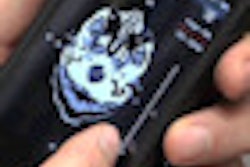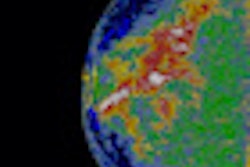Between 22% and 95% of missed lung cancer cases are attributed to overlying osseous structures that can obscure pathology, according to researchers from Radboud University Nijmegen Medical Centre in the Netherlands. However, software algorithms are available that can generate bone-suppressed images to compensate.
The researchers acquired posteroanterior (PA) and lateral digital chest radiographs of 108 patients with CT-proven solitary nodules and 192 controls. Image studies were read by a team of five radiologists and three residents, and nodule conspicuity was graded on a four-point scale.
The researchers then used commercially available bone suppression software (ClearRead Bone Suppression 2.4, Riverain Medical) and applied it to the PA radiographs to generate bone-suppressed images. The readers then reviewed the images with and without bone suppression, and recorded both the location of suspicious areas and their confidence that pathology was present.
Receiver operator characteristics (ROC) analysis showed higher sensitivity with bone suppression than without it, according to the researchers. At a specificity of 90%, sensitivity for lung nodule detection went from 67% without bone suppression to 72% with it. In addition, two of the eight nodules that were not reported by any of the observers with chest radiography alone were seen by at least four readers on bone-suppressed images.
Bone suppression improved the radiologists' performance in detecting pulmonary nodules, in particular those of intermediate conspicuity, the researchers concluded.



















